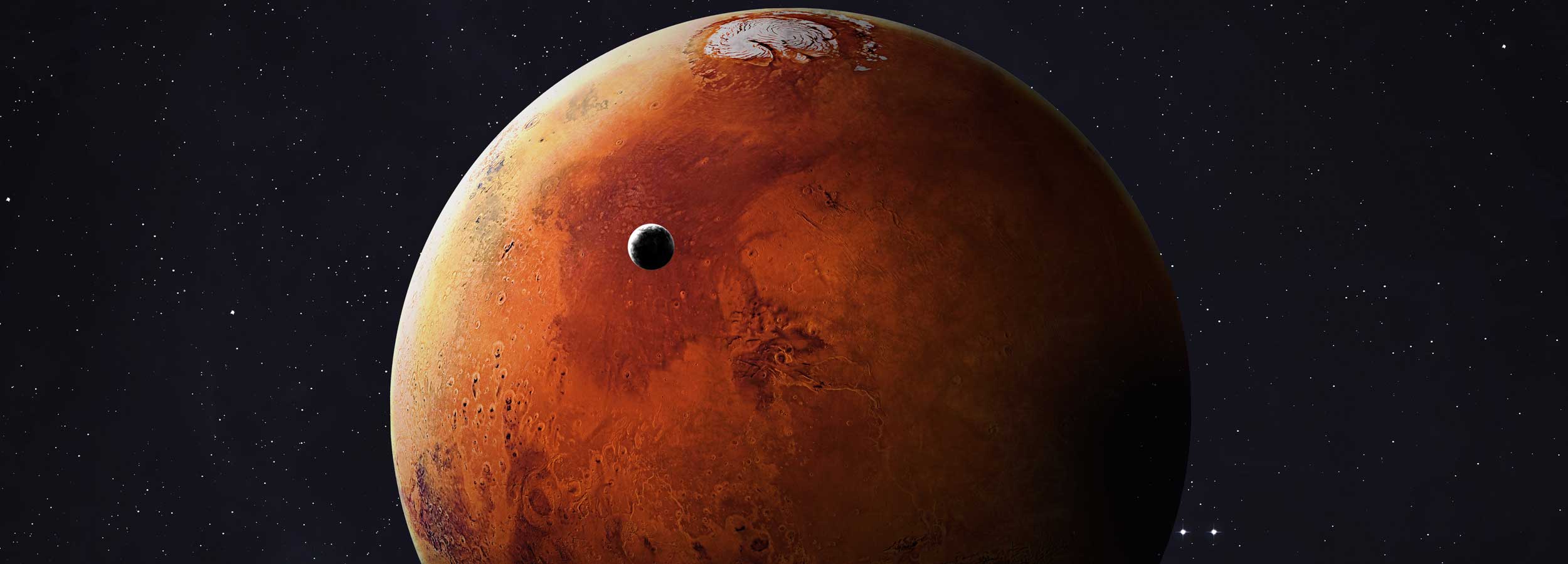
OBSERVING MARS
Observing Tips - Mars
There is much to see on Mars, however, it is usually very difficult to see the details on Mars surface without a very large telescope and optimal viewing conditions. For most of us, Mars will simply look like a large orangish/reddish disc. To see more detail on the surface of Mars, Sky and Telescope magazine has provided a Mars profiler that you can access by clicking the following link: Mars Profiler (This will open in a new window.)Mars actually rotates in the same direction as the Earth. Because of this, every hour, Mars surface will move from left to right (assuming that your telescope presents a direct view—i.e. with celestial north up and east to the left). However, most telescopes used in astronomy use either a mirror-reversed or upside-down view. In these cases, the surface markings of Mars will move from right to left.
The length of a Martian day is 24 hours 37 minutes. So, in one Earth sidereal day of 23 hours 56 minutes, Mars does not make a complete turn on its axis. Because of this, if you look at Mars in a telescope at 24-hour intervals, it will look like it has rotated "backward" by a small amount. You can simulate this effect by clicking the "+ 1 day" button repeatedly in the Mars profiler.
------text below from Sky and Telescope’s Mars profiler page-----
The bottom part of Mars Profiler's display shows basic data about Mars corresponding to the date and time of the map. At its brightest and closest in late October and early November 2005, Mars will shine at an apparent visual magnitude of –2.3, much brighter than Aldebaran and Capella, the two brightest stars in the vicinity at that time. The red planet will then span an angular diameter of 20", smaller than the 25.1" it reached during its last opposition in August 2003, but still plenty large enough to look impressive in a telescope.
One astronomical unit (a.u.), based on the mean Earth-Sun distance, is 149.598 million kilometers or 92.956 million miles. Elongation refers to Mars's angular displacement from the Sun, and illumination to the planet's phase (100% is full). The position angle (p.a.) of Mars's north pole is measured counterclockwise from celestial north through east. So a p.a. of 10° means the planet's north pole is tipped slightly east of celestial north, and a p.a. of 350° means it is tipped slightly west.
ADDRESS:
4th Day Alliance
1317 Edgewater Dr #5077
Orlando, FL 32804
(208) 477-1825
4th Day Alliance
1317 Edgewater Dr #5077
Orlando, FL 32804
(208) 477-1825

